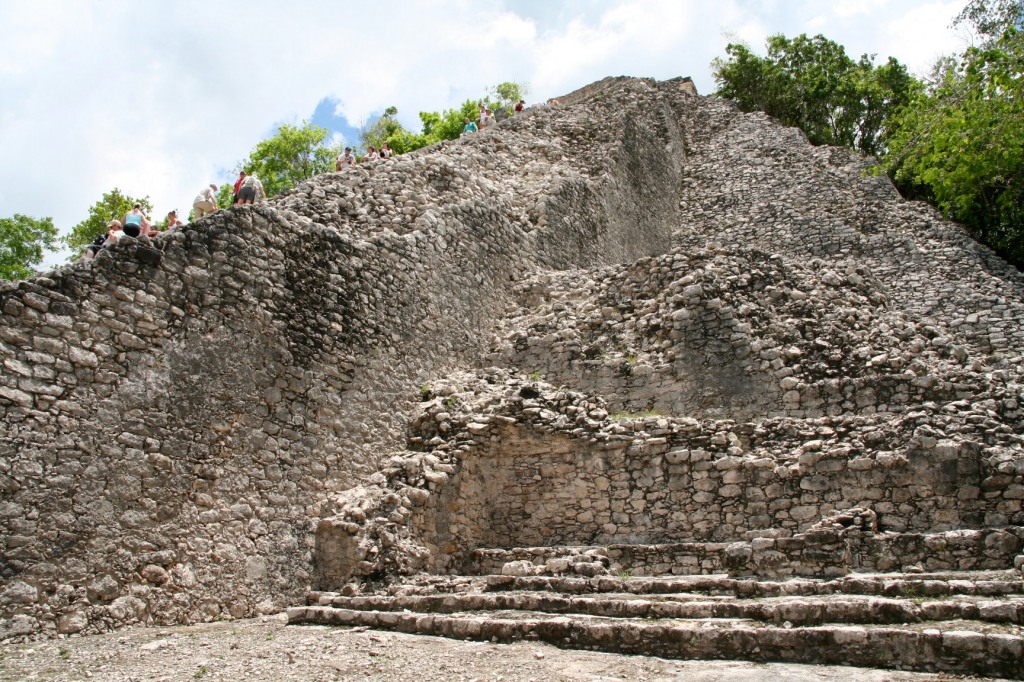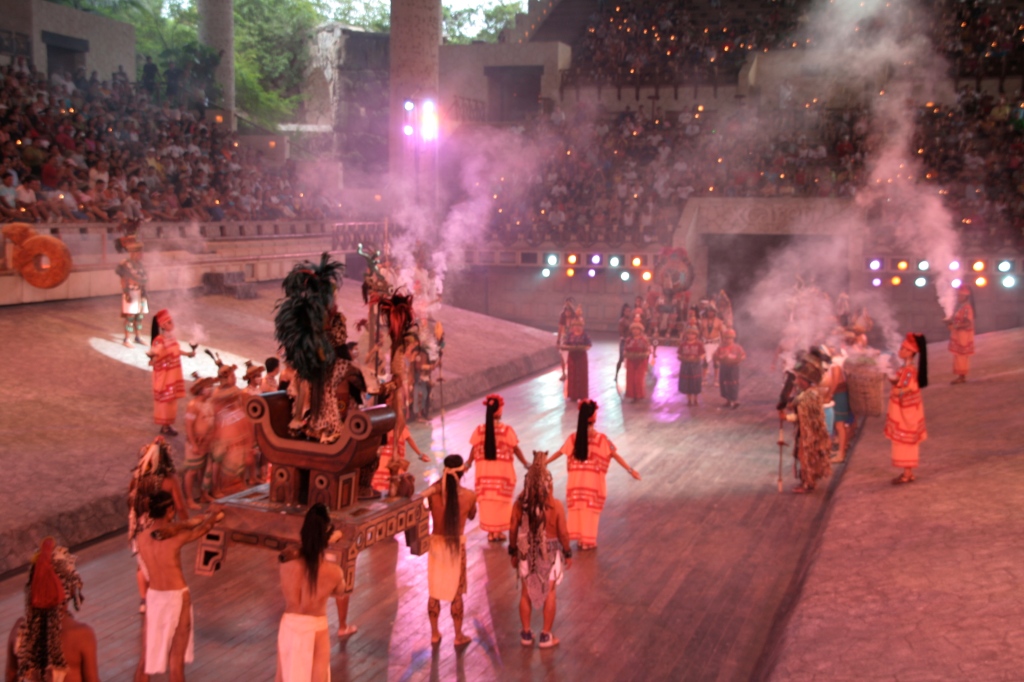Before ‘Circus Climate Change Conference’ moves on from Copenhagen to Cancún this December (29 Nov-10 Dec), it could be wise to take a close look at that region’s ancient Maya history – and maybe to learn a thing or two from it, too.
But first, the good news: the world isn’t going to end in 2012 (no matter what happens at the conference later this year). This post is hence not about the speculations around a Mayan Judgement Day in 2012, as shown e.g. in the «2012» movie. That is nonsense. What is true, is that a Mayan calendar ends on the 21th of December that year. But, to everyone’s relief: the Mayans did always plan to replace their first 5125 years old long-count calendar with a new one in 2012. If only their civilisation had survived to see that date …
Two years ago I was fortunate enough to visit the remains of their society, an extraordinarily advanced society that may have been established as early as 2000 years BC. The Maya civilisation was featured by advanced building techniques, astronomy, calendars and an astonishing modern and urban style, with densely populated cities (really fascinating, read about it!). But by 900 AD it was all abandoned and in ruins.
Recent NASA research has shed some new light on this mystery. The Maya Empire was ahead of its time and, in many ways, resembled our own modern world. Exactly this may have been what brought it down.
‘They had to burn 20 trees to heat the limestone for making just 1 square meter of the lime plaster they used to build their tremendous temples, reservoirs, and monuments,’ explains Dr. Tom Sever, NASA’s only archeologist.
Due to the cutting down of trees, the Mayans caused severe soil erosion and temperatures that increased up to six degrees, as well as changing rainfall patterns. And as every agronomist will tell you, the catastrophic consequence of this is that it becomes complicated to grow crops and food.
‘Archeologists used to argue about whether the downfall of the Maya was due to drought or warfare or disease, or a number of other possibilities such as political instability. Now we think that all these things played a role, but that they were only symptoms. The root cause was a chronic food and water shortage, due to some combination of natural drought and deforestation by humans,’ says Dr. Sever.
It is always hard to predict the future. And no matter how sophisticated climate change models become, there will always be doubt that strong groups can use to oil the wheels that serve their own interests. That is why our leaders haven’t taken the precautionary measures that are needed. What is harder to deny, however, is what has already happened in the past; Civilisations have already collapsed due to man-made changes in their natural environments.
‘By learning what the Maya did right and what they did wrong, maybe we can help local people find sustainable ways to farm the land while stopping short of the excesses that doomed the Maya,’ says Dr. Sever, with reference to the current population growth and cutting down of rain forest on old Mayan territory in Mexico and Guatamala. I would add to this that we should at the same time try to learn how we can help the locals and how we can avoid a similar disaster at a global scale.
‘They did it to themselves,’ concludes Dr. Sever, quite harshly considering that the Mayans probably didn’t know what was going on before it was to late. Today we are constantly warned by science that the climate is changing, and that these changes are most probably partly man-made. The big question is whether we are going to do anything about it. This is the question that our modern civilisation’s leaders will have to answer in December – and they will have to answer it from Cancún, from the midst of the old Maya Empire.
And so, as they will be in the area anyway, the COP16 delegates should at least for one day move their suits from Cancún’s fabulous beaches to the old ruins of the lost Maya civilisation.

